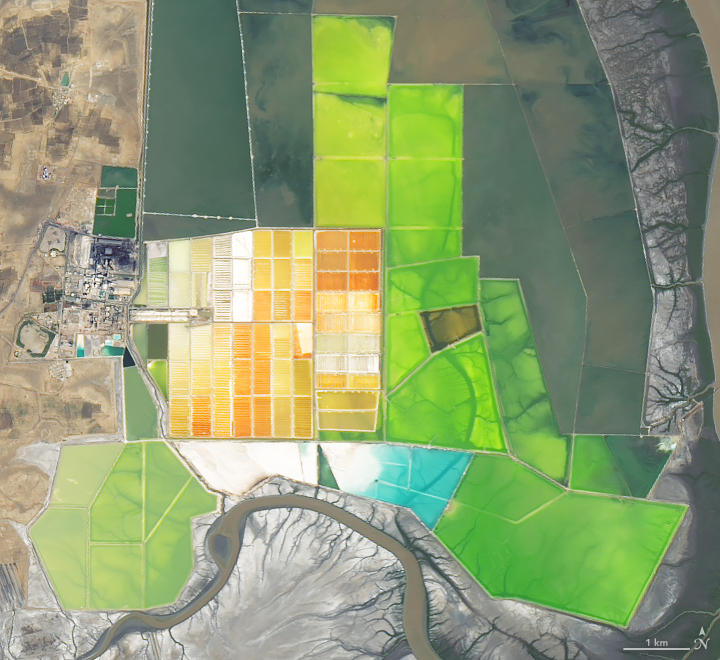

When India gained its independence in 1947, it had to import salt to meet its domestic needs. Today, it is the third largest salt producer in the world, exporting surplus salt across regions from Japan to Indonesia.
The majority of India’s salt production can be traced to one region: the west central-state of Gujarat. With more than 50 percent of salt workers located in Gujarat, the state accounts for almost three-quarters of the country's annual salt production.
These images show the city of Bhavnagar, which is located in one of the major salt-producing districts in the state. They were acquired on February 28, 2019, by the Operational Land Imager (OLI) on Landsat 8. The colorful rectangles are salt evaporation ponds and often seen in major salt-producing areas, such as the Makgadikgadi Pan in Botswana.

India’s main sources of salt are sea brine, lake brine, sub-soil brine, and rock salt deposits. In Gujarat, much of the salt comes from inland lake and marine sources. The Gulf of Khambhat has provided around 24 percent of salt production in the state in the past. Bhavnagar is one of the leading marine salt producers near the Gulf of Khambhat. It is also home to the Central Salt and Marine Chemicals Research Institute, which is one of the world’s leading salt research centers.
The saltworks in Bhavnagar have also created an important environment for wetland birds. Many wetland species use it as a wintering area, while some water birds use it as a staging ground as they migrate along the coast.
NASA Earth Observatory images by Lauren Dauphin, using Landsat data from the U.S. Geological Survey. Story by Kasha Patel.